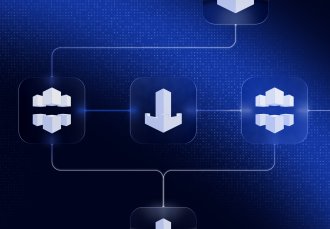
Contact us
Our team would love to hear from you.

Healthcare is quite a conservative field, for which a single standard throughout the vertical is an important condition for efficiency. Due to the digitalization of healthcare, there have appeared a number of medical information systems that collect and store data about patients and their interactions with health care facilities. The diversity of such information systems, as well as the variety of the environments in which medical care is provided, require a lot more ways of interaction. Standardization seems to be the best choice if you don’t want to get lost in the flow of information within lots of healthcare software applications. In this article, we will cover the most widely used healthcare data exchange standards: HL7v3 standard and the transition to the more general FHIR protocol.
HL7 (Health Level 7) is a standard for electronic medical data management, exchange, and integration. It easily interfaces with other protocols and standards and is used by multiple suppliers of medical equipment. The first version was developed in 1987, and version 3 is currently widely used. This standard has been adopted in the USA, Canada, Australia, and other countries.
HL7 enables a unified presentation of medical information. It standardizes the exchange of data among various health care software programs, which significantly reduces or eliminates the need for the development of specific interfaces required in the absence of the standard. A unified form of the obtained data is a valuable feature for clinical and statistical studies
Currently, HL7 defines the interaction of various systems that send or receive patient logistics data (ADT – admission, discharge, transfer), data requests, orders, results of laboratory and diagnostic tests, billing invoices, and file changes containing reference and regulatory information. It is designed to maintain a central data bank, as well as manage a more distributed environment in which data is dispersed across the information systems of individual departments.
The general structure of the HL7 standard includes:
Developers and end-users of the HL7v3 standard have encountered some operational difficulties. The standard turned out to be complicated to work with, and it was necessary to develop a standard with similar functionality but that would be simpler in terms of structure and logic. And here came the HL7 FHIR standard.

FHIR (Fast Healthcare Interoperability Resources) originates from the HL7 standard, and its version 4 was released in 2019. The standard defines the format for storing, exchanging, and providing medical information in electronic form. FHIR is used in various applications, including mobile apps, EHRs, cloud communications, and many others.
Both FHIR- and HL7-enables systems deal with a variety of tasks. FHIR, however, has extra benefits, especially when it comes to interoperability.
The standard is split into several modules:
In FHIR systems all resources must have a common definition and representation method, a common set of metadata, and a readable part. Resources are based on XML, JSON, HTTP, Atom, and Oauth. The standard seeks to ensure that a system is used and interpreted by any other health care software and read by any device.
HL7 has been in the game for more than 30 years, and today it has more than 500 corporate clients. FHIR, in its turn, is much younger but it is gaining popularity and is aimed at practical implementation of the most recent web technologies. Nevertheless, it is still unclear how quickly the massive transition to FHIR will happen. Most likely, both existing standards will be applied in parallel in health care software development.
Our team would love to hear from you.
Fill out the form, and we’ve got you covered.
What happens next?
San Diego, California
4445 Eastgate Mall, Suite 200
92121, 1-800-288-9659
San Francisco, California
50 California St #1500
94111, 1-800-288-9659
Pittsburgh, Pennsylvania
One Oxford Centre, 500 Grant St Suite 2900
15219, 1-800-288-9659
Durham, North Carolina
RTP Meridian, 2530 Meridian Pkwy Suite 300
27713, 1-800-288-9659
San Jose, Costa Rica
Escazú Corporate Centre, Piso 6
40602, 1-800-288-9659